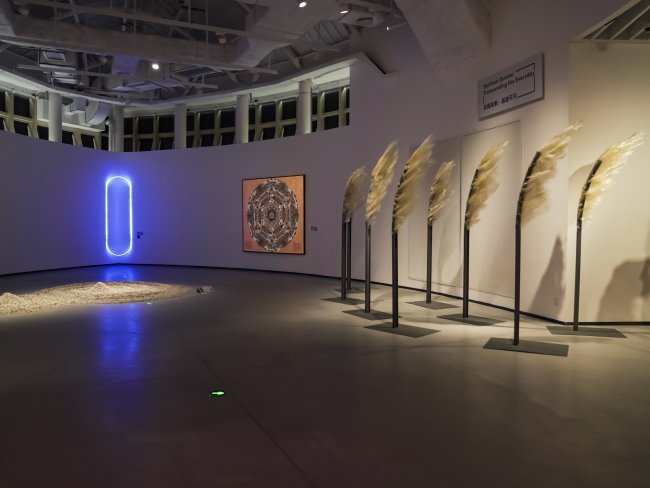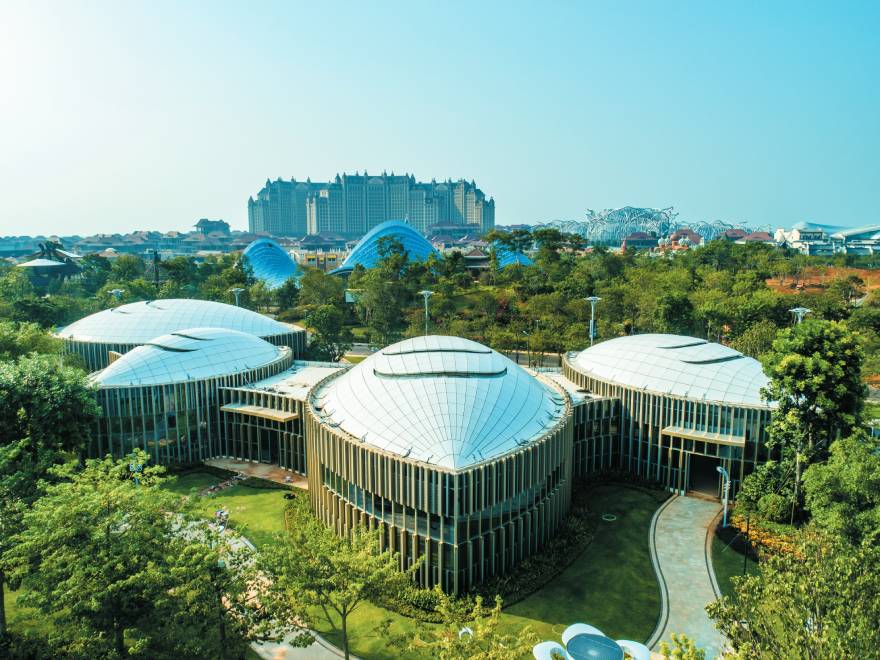The Tides of the Century – Ocean Flower Island International Art Exhibition - May 2021
Greece was the Guest Country of Honor in the "The Tides of the Century – Ocean Flower Island International Art Exhibition” which opened in May 2021 in Hainan, China. The exhibition, inaugurated at the Ocean Flower Island Museum Park in Hainan’s Danzhou city, features 7 museums and 176 works by 95 artists from 24 countries. The title of the Guest Country of Honor exhibition is “Thesis-Antithesis-Synthesis. In the Belt of Change” [“命题 - 对立 - 统一,追随变化的轨迹”]. It has been conceived and curated by Ms. Katerina Koskina, supported by “POLITES”, Non-profit Cultural Association.
The theme arises from the common belief that the ancient Greek and Chinese civilizations, which have defined and shaped cultures beyond their borders, shared many common elements in their quest of understanding the World. For both cultures, the World was not limited to the physical earth or the natural world but encompassed the much wider, complicated, incomprehensible but harmonious structure of the Universe. The Greek exhibition is structured on the discursive method, where the flow of time and change is expressed in three stages of development: “Thesis- Antithesis – Synthesis” rooted in Ancient Greek philosophy, particularly the Socratic obstetric method. Besides, it conveys to the visitors the ancient Greek idea of endless movement which drives humanity to engage with change, an idea close to the notion of Yin and Yang in the Chinese philosophy and cosmology.
The works, ‘Mandala I Building’ and ‘Mandala II – Industry’ with which I participate in the exhibition are the first two of a new series of my work, the Mandalas. Mandalas are geometric compositions that are based on the circle, and repeat parts at a certain rhythm. Mandalas have existed, virtually all over the planet, since ancient times. They are aids to meditation, ecstatic experience and ways of organizing the basic principles of our perception of the world. The main reference source for these works are mainly mandalas from Tibet. The geometric constructions sail in the golden plain from the Byzantine iconography. The elements depicted, however, instead of symbols of spiritual concepts, are creations of the rational thought of the Western world. Mandalas become images of worship of Science, which is the new God of modern people.


Photo Credits: Athens Voice
- ©Stelios Faitakis 2022
- Terms of sale
- Designed by Susami